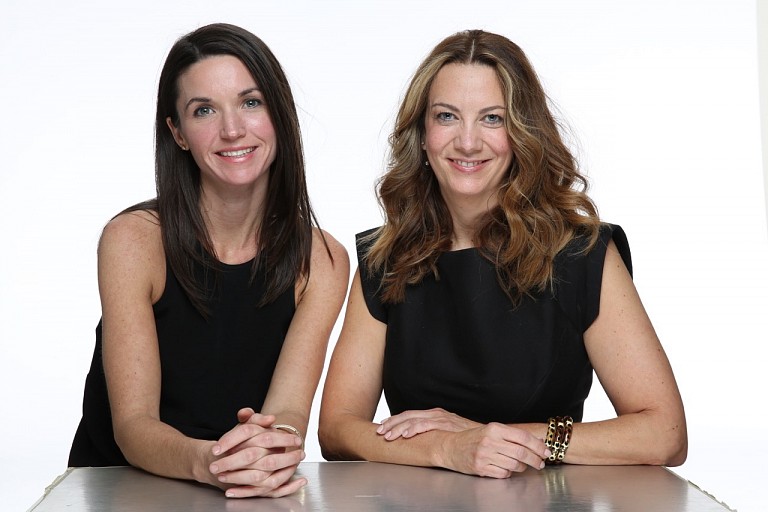
Surface Magazine | The Gallerist Duo Championing Unsung Postwar Artists
September 11, 2020 - Surface Magazine
Christine Berry and Martha Campbell, the founders of Berry Campbell gallery in New York, seek to spotlight oft-overlooked artists who played pivotal roles in popular movements.
Christine Berry and Martha Campbell often finish each other’s sentences—and why wouldn’t they? The art dealers have worked together for nearly a decade, and decided to strike out on their own in 2013, founding Berry Campbell gallery in Chelsea, New York. Exhibiting postwar and contemporary work, the gallery seeks to showcase underrepresented artists who still played key roles in the popular movements. But, as Campbell notes, they don’t just stay in one lane: “We don’t have any real parameters—Christine and I have similar taste in terms of what we like.” On the occasion of the gallery’s latest show, “Edward Avedisian: Reverberations,” Surface caught up with the pair to discuss their role in the Chelsea gallery scene, the role of physical spaces in an increasingly digital world, and more.
Tell me about the origins of Berry Campbell. What did you feel was missing in the Chelsea gallery community that you wanted to become?
Campbell: Seven or eight years ago, Christine and I worked together at a large Midtown gallery specializing in American paintings and abstract expressionism, notably painters from from the East End of Long Island. We absolutely loved working together, and she had been in the business for about 15 years longer than I had, so I always felt she was a great mentor and confidante. When that gallery closed, I didn’t want to find a job working for “the man” at another gallery, so Christine and I talked. We discovered a gap in the Chelsea art scene: a few galleries showed artists that were well-respected back in their day, but for whatever reason—whether it was race, gender, or geography—they had fallen off the map. We felt that our role could be bringing these postwar and abstract expressionist artists back to the forefront by telling their stories and showcasing their contributions to the movement.
What kinds of artists does the gallery represent, or seek to represent? You’ve been vocal about championing female artists. What kind of work speaks to you and adds to your roster?
Berry: Recently we’ve had some critical acclaim by featuring women artists from the 1950s who were part of the group of artists that you know, like Joan Mitchell, Helen Frankenthaler, and Elaine de Kooning, but maybe didn’t have as wild of lives or as much written about them. We’ve done exhibitions of Perle Fine, who was part of the Ninth Street Show. She’s recently been exhibited at the Guggenheim, and we’ve represented her for more than eight years, so she’s finally getting her due. Yvonne Thomas is another artist from the 1950s whom we’ve shown twice. We’re trying to get the word out there.
You’re both so steeped in gallery and museum worlds, and have deep art historical backgrounds. What makes Berry Campbell different from your past ventures?
Campbell: It’s a true collaboration. Taking on artists and estates is truly personal because not only are you showing the artist’s work, you’re honoring their life. You have to truly believe in the wholeness of the artist and the people you work with. We’re always open to hearing ideas and seeing bodies of work that haven’t been seen before. Christine embraces my ideas, and I embrace Christine’s ideas. All of us work together.
Has Berry Campbell added any exciting new artists to its roster recently?Campbell: Our most recent addition was Ida Kohlmeyer. We showed her work in the spring—it was supposed to only last a month, but lasted through the pandemic.
Berry: She’s a New Orleans artist and is really wonderful. She started out as an abstract expressionist and then shifted her style to these great kind of hieroglyphic paintings.
It’s exciting that you’ve reopened after months of online viewing rooms. How has Covid-19 impacted your programming? Has it made you reconsider the gallery’s role?
Berry: We have a beautiful ground space on West 24th Street in Chelsea across from Gagosian and Matthew Marks. And before the pandemic, we used to have a hundred people come in on a Saturday afternoon, and then the gallery closed. We switched to having viewing rooms on our website, but I still believe that people need to see art in person. That’s why we’ll always go to museums and art galleries—you have to see a painting to experience it or see a sculpture outside to be a part of it. While the digital market is growing, you have to see something in person to get the true feeling and sense of scale.
Back to News
